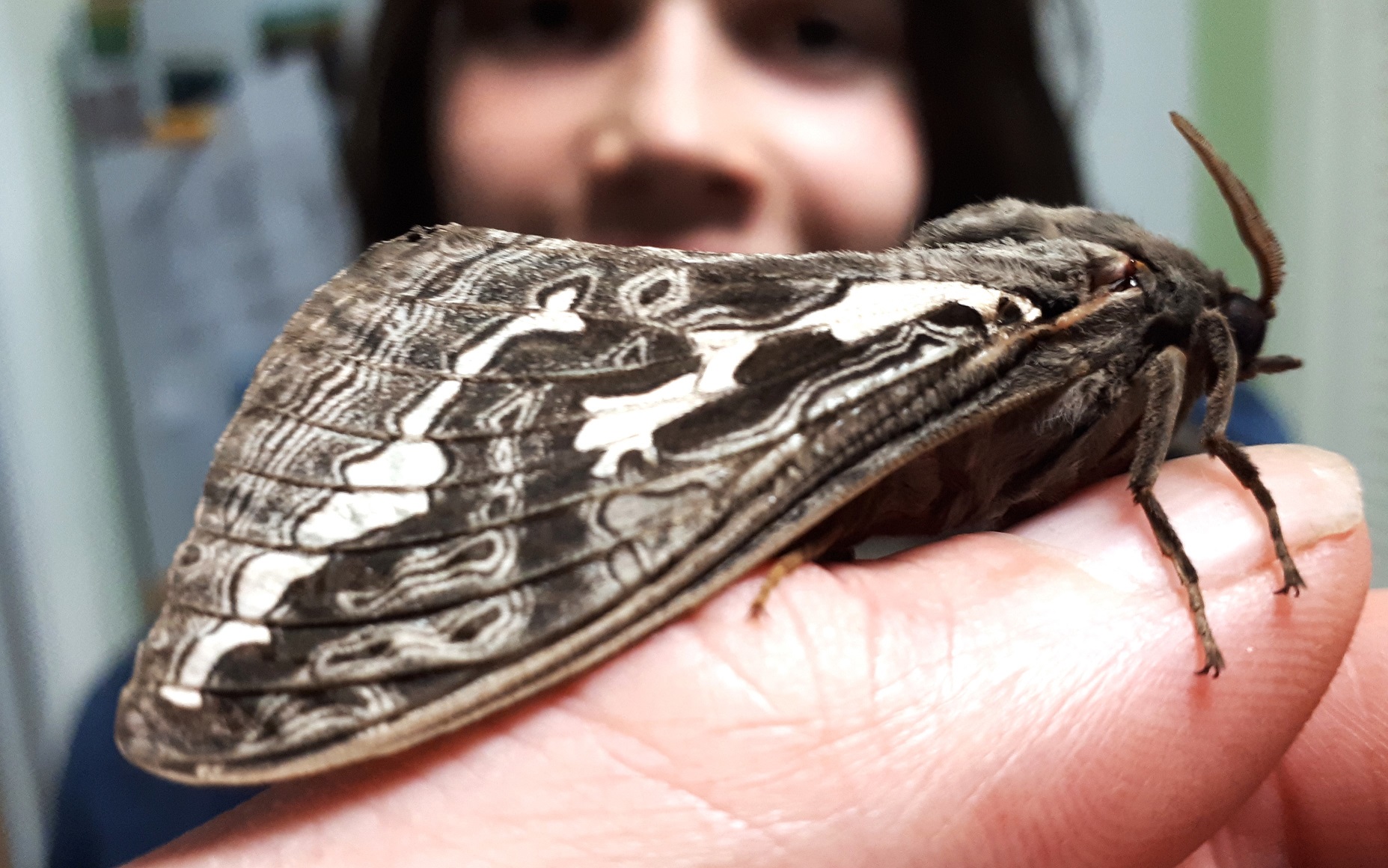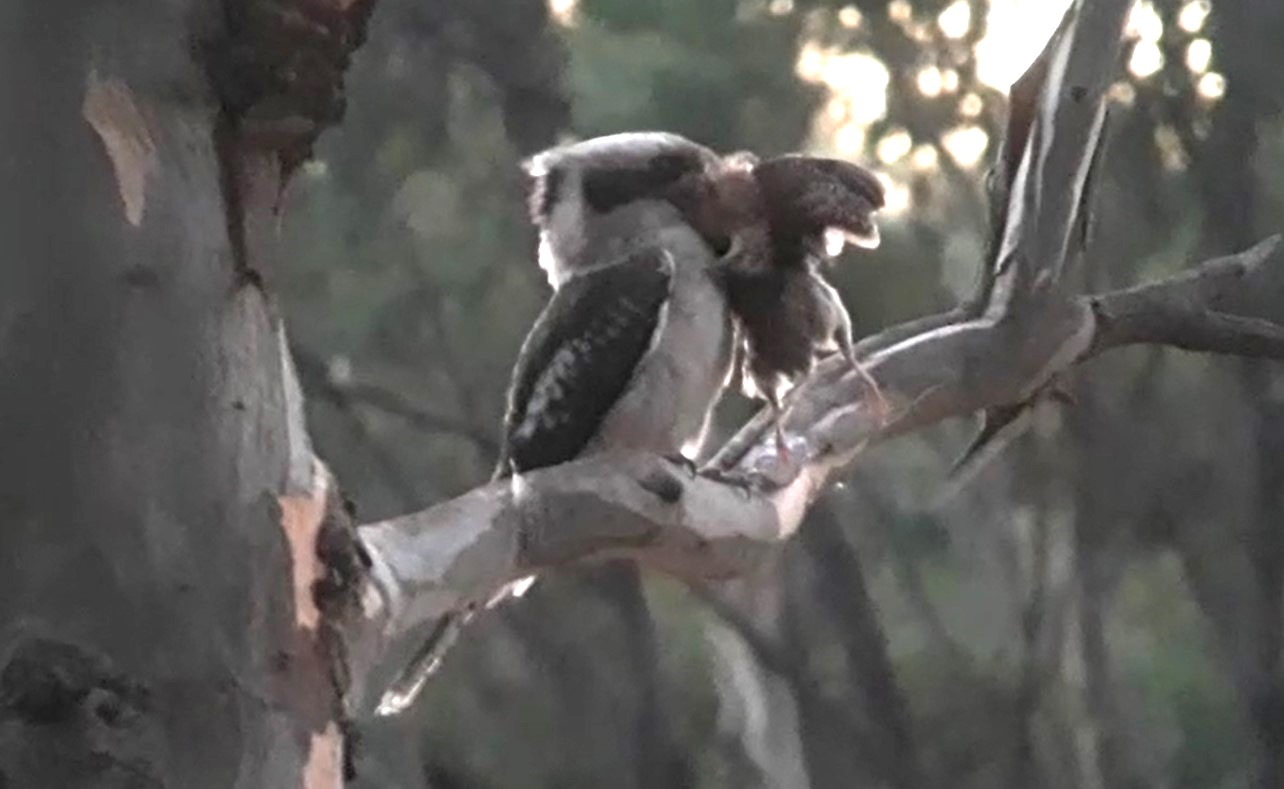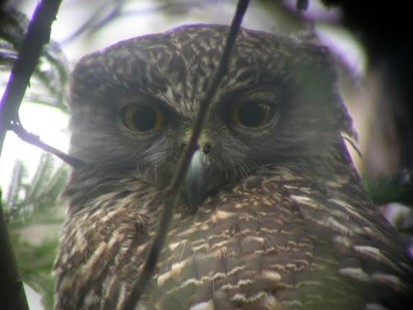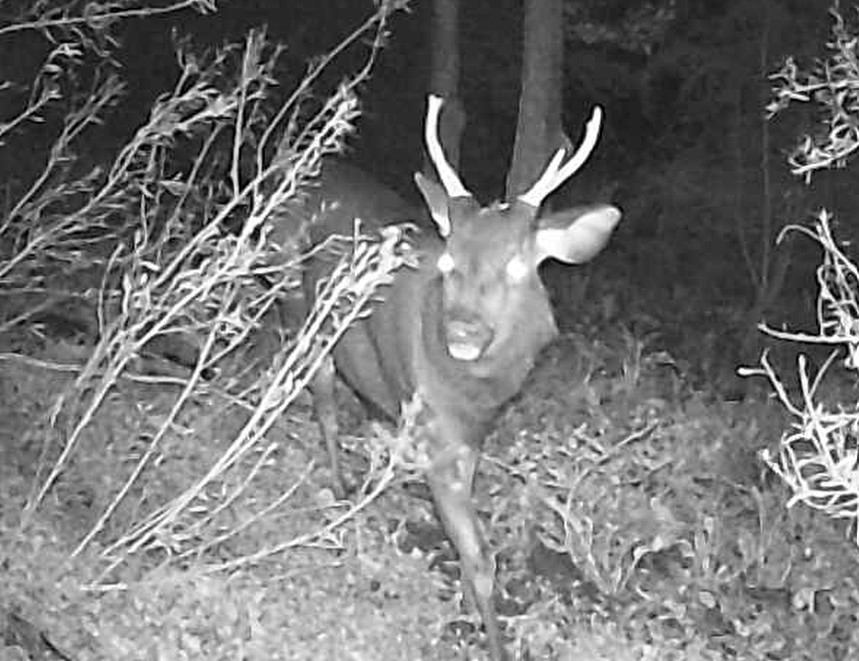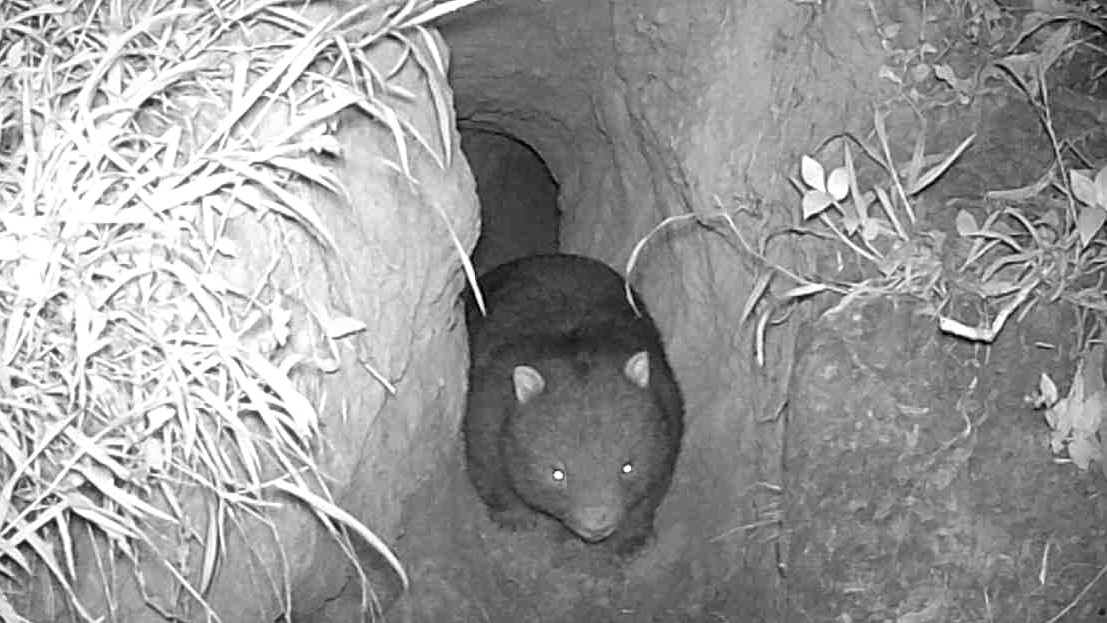The clouds cleared in time for a lovely day at the Long Bed. Eight dedicated weeders made a considerable difference in reducing the amount of Panic veldt grass (Ehrharta erecta) which was just about to go to seed. Thanks to...
The Rain Moth (Abantiades atripalpis) is a large moth seen after heavy rain in Autumn. They are found in Melbourne and other parts of southern Australia. Their larvae live under the ground and eat roots. When the larvae metamorphose and emerge...
On the 23rd March this year while walking near Banyule Swamp, a repetative thwacking sound alerted me to a Kookaburra bashing prey against a tree branch. This is standard practice. The prey was sizable and I thought it might be...
The Powerful Owl is Australia's largest owl (about 60cm tall) and hunts possums and gliders. They are relatively rare and are classed as a Vulnerable species on the Victorian Flora and Fauna Guarantee Act 1988 Threatened List. In 2023 the Warringal Conservation...
Deer are an emerging threat to native vegetation and wildlife. There are estimated to be in excess of a millon feral deer in Victoria (Invasive Species Council). Deer are being targetted in programs operating in parks and wilderness areas, typically...
Banyule Flats is home to many wombats. They are rarely seen by day, but their scratching and burrows (below top) are widely evident. Another sign that wombats are around is the cube-shaped green faeces (below bottom) that they carefully perch...


